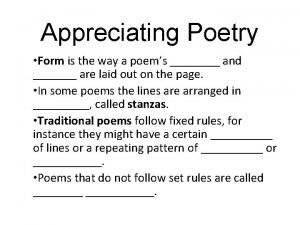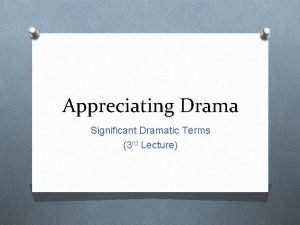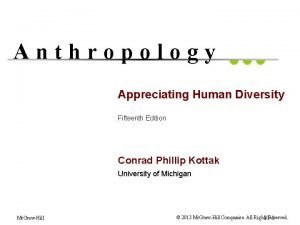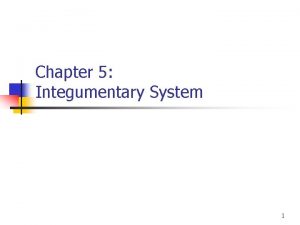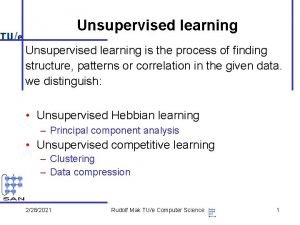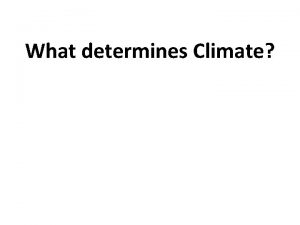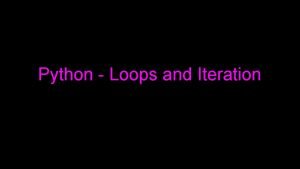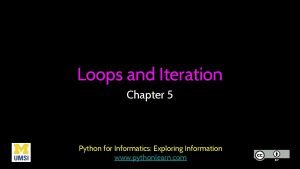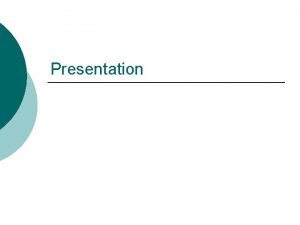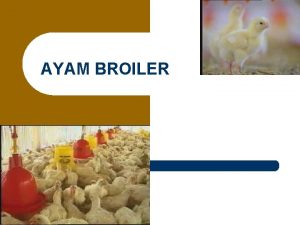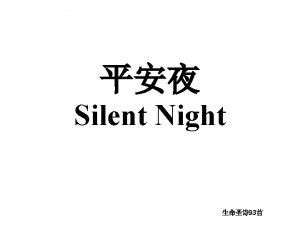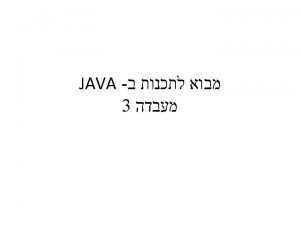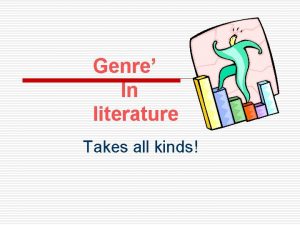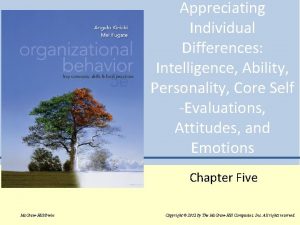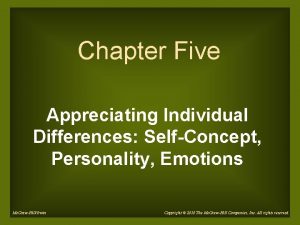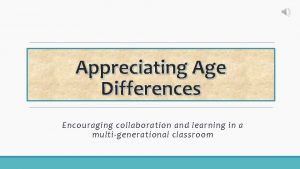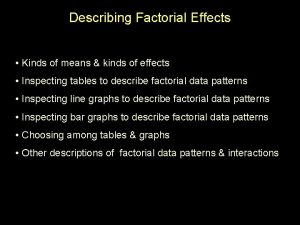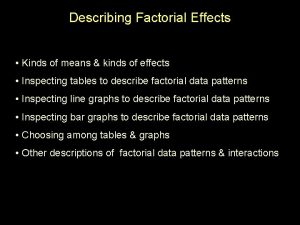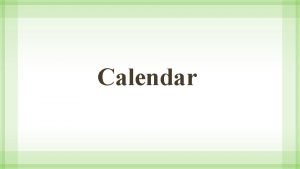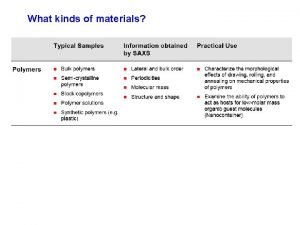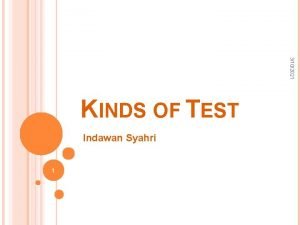It Takes All Kinds Appreciating our differences while













































- Slides: 45

It Takes All Kinds Appreciating our differences while recognizing our similarities

Using Di. SC Profiles

The Di. SC Profile is a personality assessment (not test) that provides insights into natural and adaptable behavioral styles in relation to the workplace, leadership, project teams. https: //www. onlinediscprofile. com/what-is-disc/

D Dominance S Steadiness Influence i Influence C Conscientiousness

Dominance direct, results-oriented, firm, strong willed, and forceful Tendencies: • Getting immediate results • Causing action • Accepting challenges • Taking authority • Managing Trouble • Solving problems Needs Others Who: * Weigh pros and cons * Calculate risks * Use caution * Research facts * Deliberate before deciding * Structure environment

High D’s Environment � Power and authority � Prestige and challenge � Opportunities for individual accomplishments � Wide scope of operations � Direct answers � Opportunities for advancement � Freedom from controls and supervision � Many new and varied activities

High D’s Action Plan To Be More Effective � Receive difficult assignments � Understand that they need people � Base techniques on practical experience � Receive an occasional shock � Identify with a group � Verbalize reasons for conclusions � Be aware of existing sanctions � Pace self and relax more

Influence Outgoing, enthusiastic, optimistic, highspirited, and lively Tendencies: • Generating enthusiasm • Being articulate • Entertaining people • Participating in a group Needs Others Who: * Concentrate on tasks * Respect sincerity * Take logical approach * Prefer to deal with things instead of people

High i’s Environment � Popularity, social recognition � Public recognition of ability � Freedom of expression � Group activities outside of the job � Democratic relationships � Freedom from control and detail � Opportunities to verbalize proposals � Coaching and counseling

High i’s Action Plan To Be More Effective � Control time � Make objective decisions � Use hands-on management � Be more realistic appraising others � Make priorities and deadlines � Be more firm with others

Steadiness even-tempered, accommodating, patient, humble, and tactful Tendencies: • Consistent/predictable • Demonstrate patience • Showing loyalty • Being a good listener • Handling excited people Create stable, harmonious work environment • Needs People Who: * Are self-promoting * Apply pressure on others * Help prioritize work * Able to multi-task * React quickly to unexpected change

High S’s Environment � Maintenance of status-quo � Predictable routines � Credit for work accomplished � Minimal work infringement on home life � Sincere appreciation � Identification with a group � Standard operating procedures � Minimal conflict

� Be High S’s Action Plan To Be More Effective conditioned prior to change � Validate self-worth � Know how personal effort contributes to the group effort � Have colleagues of similar competence and sincerity � Know task guidelines � Have creativity encouraged

Concientiousness analytical, reserved, precise, private, and systematic Tendencies: • Follows directives • Adheres to standards • Uses indirect approach to conflict resolution • Checking for accuracy • Analyzes performance critically Needs People Who: * Delegate important tasks * Use policies as guidelines * Encourage teamwork * Initiate/facilitate discussion * State unpopular positions * Make quick decisions

High C’s Environment � Clearly defined performance expectations � Values on quality and accuracy � Reserved, business-like atmosphere � Opportunities to demonstrate expertise � Control over those factors that affect their performance � Opportunity to ask ‘why” questions � Recognition for specific skills and accomplishments

High C’s Action Plan To Be More Effective � Plan carefully � Know exact job descriptions and performance objectives � Schedule performance appraisals � Receive specific feedback on performance � Respect people’s personal worth as much as their accomplishments � Develop tolerance for conflict

Diversity in the Workplace

It Takes All Kinds

Definition of Diversity is defined as the differences we recognize in ourselves and others, such as gender, culture, race, ethnicity, age, religion, sexual orientation, physical and mental abilities.

Definition of Diversity But diversity also encompasses so many other things such as economic status, point of view, job title, educational background, and political beliefs. We are all unique human beings.

Dimensions of Diversity Age Birth Order Education Ethnicity Race Religion Sexual Orientation Skills/talents Nationality Native Language Parental Status Personal Style Hobbies Physical Appearance Physical Capability Political Affiliation Job Title Gender Health Introvert/Extrovert Marital Status Technical proficiency Work ethic Work Experience Parenting Style Athletic Abilities

The Changing Nature of the Workforce This is the first time in history, where we have four generations working side-by-side in the workplace competing for the same jobs.

Understanding Generations

What’s a Generation? • A group of people defined by age boundaries (those who were born during a certain era), • they share similar experiences growing up, and • their values and attitudes tend to be similar.

What’s a Generation Gap? A generation gap occurs when older & younger people do not understand each other because of their different values, attitudes, opinions, habits, behavior, interests, communication styles, and experiences.

Pa 1. TODAY’S GENERATIONAL WORKFORCE • Matures (Traditionalists) Born before 1945, they are late sixties and over today. • Baby Boomers Born 1946 to 1964, they are in their sixties, fifties today. • Generation Xers Born 1965 to 1980, they are in their late forties and late thirties today. • Millennials (Gen Y) Born after 1980, they are early thirties and under today.

GENERATIONAL MARKERS MATURES Great Depression Electrification World War II Cold War BABY BOOMERS GENERATION X’ERS Y’ERS MILLENIALS Civil Rights War on Poverty Race to Space Assassinations Vietnam Impeachment AIDS Video Games Homelessness Fall of Berlin Wall The Web Poverty The Environment Violence Terrorism Technology School Shootings

Generation Gaps If you don’t think a generation gap makes a difference, think of this example: How and where did Kennedy die? Matures and Baby Boomers would say gunshots in Dallas, Texas. (currently 40+ years old) Generation Xers remembers a plane crash near Martha’s Vineyard, Massachusetts. (25 to 40 years old) Millennials might say “Kennedy who? ” (5 to 29 years old)

QUESTION: Do Workers of different generations blend as they work together? Is age a major factor at work? Source: HRI, 2001 Changing Workforce Survey

What do they value at work? Matures � � � � � Dependability Loyalty and tradition Persistence Hard Working and long hours Work-life balance is a personal responsibility Wisdom and experience are better than ‘book smarts’ Satisfaction of a job well done is reward enough Don’t need feedback – no news is good news See changing jobs as carrying a stigma “I learned it the hard way and so will you” Key Words: Loyal and Rational

Baby Boomers � Workaholics � Accept Stress � Team – oriented � Status/Titles important � Want money, promotional opportunities � Want feedback once a year (with supporting documentation) � Want support in finding meaning and balance between work/life. Key Words: Optimistic and Positive

Gen-Xers, X-ers • Expect close supervision • Dedicated to goal achievement • Desire for job security ; insecure; focus on employability • Desire to be recognized; no ‘dues paying’ • Freedom is the ultimate reward; “free-agent” approach. • Want immediate feedback – now • Want balance now – do not want to wait for a life • Changing jobs is seen as necessary • The more they learn, the more they will stay. • Work life/ Balance • Fun and communal workplace Key Words: Skepticism and caution

Millennials � Dependent on close supervision � Challenge and variety seeking � Distrust hierarchy and authority � Continuous development of skills � Lack of loyalty – unwilling to commit � Work/life balance � Fun and communal workplace � Want meaningful work over rewards � Want immediate feedback – yesterday � Work isn’t everything – flexibility is key � Expect to change jobs – even careers – many times � Believe that continuous learning is the way of life � No ‘dues paying’ Key Word: Realistic and Hopeful

Workplace Characteristics Depression 1927 -1945 Strong work ethic Hoe to end of row Manage Loyal to employer Independent but conventional Work well with others Technically savvy Follow the leader Strong chain of command Want to win Baby Boom 1946 -1964 Baby Bust 1965 -1983 Baby Boomlet 1984 -2002 Money/principles Mixed Manage (lead/follow) Mixed Care deeply about Principles/satisfaction Lifestyle first No need to lead Loyal to skills Don’t care what ? ? ? Lifestyle first ? ? ? Don’t care what others think Want others to work with them Technically challenged Lip service to mission Mixed others think Work best alone Technically savvy Care about mission Individual first Technically sophisticated Must have mission Individual first Want to win HRI

Learn the four (4) Generation Characteristics. And find ways to interact with each group that will be mutually beneficial acknowledging their differences: Matures Baby Boomers Generation X Millennial Work Ethic and Values Loyal Practical, formal Hard work Respect authority Sacrifice Duty before fun Adhere to rules Loyal, optimistic Workaholics Work efficiently Crusading causes Personal fulfillment Desire quality Question authority Team player Eliminate the task Self-reliance Want structure & direction Skeptical Prove it to me Informal Goal –oriented optimisitc What’s next Multitasking No “dues paying” Entrepreneurial Tolerant Social activism Work is … An obligation An exciting adventure A difficult challenge A contract A means to an end Fulfillment Interactive Style Group is more important than the individual Team player Loves to participate in team meetings Entrepreneur Participative Run in packs Feedback and Rewards No news is good news Satisfaction in a job well done Don’t appreciate it Money Title recognition Sorry to interrupt, but how am I doing? Freedom is the best reward Instant gratification Whenever I want it, at the push of a button Meaningful work Messages That Motivate Your experience is respected You are valued You are needed Do it your way Forget the rules You will work with other bright, creative people Work and Family Life Work-life balance is a personal responsibility No balance Live to work Balance Gen "X" Work to live Balance

Appreciate their strengths, values, and expectations. Instead of harbouring frustration over generation differences, focus on the positive attributes your people possess and create an environment that appeals to all. In a Nutshell… Matures Work hard, respect authority, follow rules, believe in paying their dues, being loyal to institutions, and the customer is always right Boomer Work hard and long (workaholic), work efficiently, want to be respected and rewarded, like being competitive Xer Work smarter-not harder, multi-tasker, work to live, don’t micromanage me, thank me often, lighten up Millennials Important and interesting work first, mentor me, I want goals and direction, what’s in it for. Genme, "X" let me have fun

Workplace strategies for coaching and managing Matures Strengths on the Job: stability, dedication and loyalty DO: • Ask what has worked for them in the past • Acknowledge their contributions • Let them define quality; focus on quality • Show Respect. • Appreciate their dedication. • Offer opportunities for them to mentor. DON’T: • Attempt to wow them with data • Force the use of technology unnecessarily Gen "X"

Workplace strategies for coaching/managing Boomers Strengths on the Job: teamwork and dedication-workohilic and competitive . DO: • Show them how you can help them use time wisely • Assess their comfort level with technology in advance • Acknowledge their time spent in the workplace • Demonstrate the importance of a strong team • Use optimistic language; Speak in an open direct style • Offer meaningful work and recognition as appropriate. • Follow up and check in and ask how the individual is doing on a regular basis DON’T: • Assume you understand or know their needs in advance • Assume technology is the solution • Assume they’ll tell you if they are struggling-you Gen "X" need to check in

Workplace strategies for coaching/managing X’ers Strengths on the Job: adaptability and bridge-builders-cynical and pessimistic DO: • Put all the options on the table • Be prepared to answer “why” • Present yourself as an information provider • Appear to enjoy your work • Follow up and meet your commitments • Give them space. • Get over the notion of dues paying. • Push them to keep learning. DON’T: • Try to underplay the challenge • View questions as an implied challenge Gen "X"

Workplace strategies for coaching/managing Millennials Strengths on the Job: team oriented and resilient-busy, stressed, ambitious DO: • Provide timely feedback. • Offer peer-level examples. • Spend time providing information and guidance. • Be impressed with their decisions. • Challenge them. • Ask them their opinion. • Find them a mentor. • Demonstrate personal relevance DON’T: • Create a stressful environment • Forget the importance of the individual Gen "X"

“Me” Chart ME

Exclusion not including anyone/anything that is “different” using “. . isms” as barriers to acceptance: racism, ageism, sexism, elitism,

Diversity presence of differences that can be used to differentiate groups from one another

Inclusion Recognizing that we are one even though we are not the same

Through inclusion we have a blend of flavor
 Appreciate our differences
Appreciate our differences Appreciating poetry
Appreciating poetry Appreciating drama
Appreciating drama Anthropology appreciating human diversity
Anthropology appreciating human diversity Do while loop adalah
Do while loop adalah During our lives, we produce three kinds of hair:
During our lives, we produce three kinds of hair: Name all the rays
Name all the rays The winner takes it all
The winner takes it all The winner takes it all
The winner takes it all Anything that has volume and mass
Anything that has volume and mass Anything that has matter and takes up space
Anything that has matter and takes up space Our vacuum hums a happy tune while it cleans.
Our vacuum hums a happy tune while it cleans. Mendidih
Mendidih Three market forms of meat
Three market forms of meat Stefanos nikolaidis
Stefanos nikolaidis Summers are caused by
Summers are caused by I love nn
I love nn Thinking affects our language, which then affects our:
Thinking affects our language, which then affects our: Our census our future
Our census our future Longing for peace our world is troubled
Longing for peace our world is troubled Our life is what our thoughts make it
Our life is what our thoughts make it We bow our hearts we bend our knees
We bow our hearts we bend our knees Our census our future
Our census our future Our life is what our thoughts make it
Our life is what our thoughts make it Summary of the poem money madness
Summary of the poem money madness Awareness of ourselves and our environment is:
Awareness of ourselves and our environment is: Awareness of ourselves and our environment is
Awareness of ourselves and our environment is God our father christ our brother
God our father christ our brother Our future is in our hands quotes
Our future is in our hands quotes Our awareness of ourselves and our environment
Our awareness of ourselves and our environment Awareness of ourselves and our environment is
Awareness of ourselves and our environment is Iteratio.n5
Iteratio.n5 Iteration n5
Iteration n5 Let this place erupt with praise
Let this place erupt with praise Thank you to all our sponsors
Thank you to all our sponsors Oh lord my lord how excellent is thy name
Oh lord my lord how excellent is thy name Assalamualaikum
Assalamualaikum Love ever hurt never
Love ever hurt never Interventi sociali rivolti all'infanzia e all'adolescenza
Interventi sociali rivolti all'infanzia e all'adolescenza Above all powers
Above all powers I work all night i work all day
I work all night i work all day Basic communication operations in parallel computing
Basic communication operations in parallel computing Sistem all in all out
Sistem all in all out Tricep extensiob
Tricep extensiob Silent night holy night all is calm all is bright
Silent night holy night all is calm all is bright You are my all in all images
You are my all in all images

